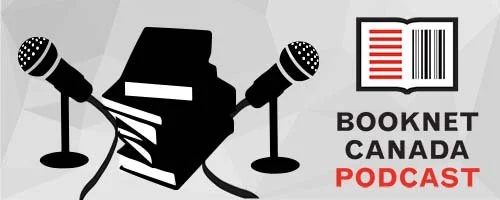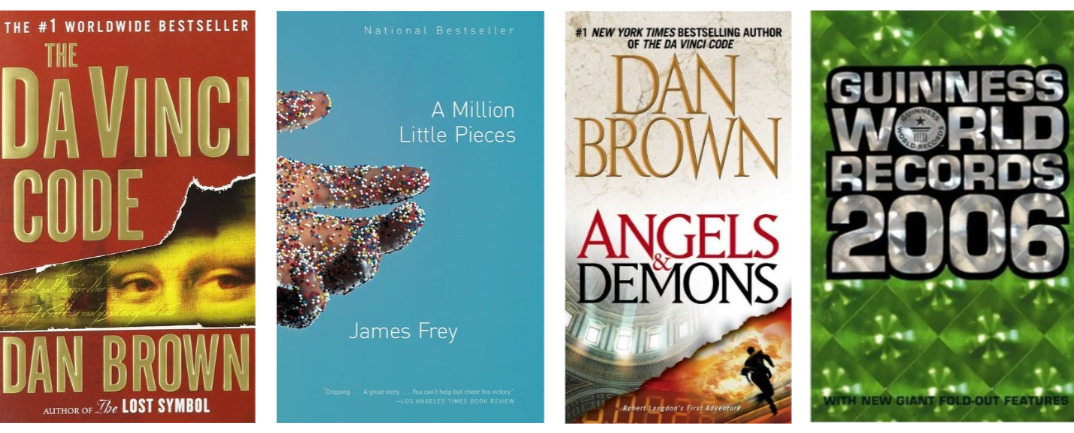Join me as I share insights about the use, opportunities, and easily fixable limitations of the current Thema qualifiers, specifically the national extensions, their capability to complement BISAC subject categories and merchandising themes, and an invitation to help us improve book standards.
Before jumping into the main topic of this post, here are some key language considerations I ask you to keep in mind, as well as a brief summary of the possibilities BISAC and Thema have to offer.
“Market/subject” and “subject/concept” are phrases I’ll be using to describe the differences between BISAC and Thema. I also use the terms “qualifiers” and “modifiers” interchangeably as I think the latter can help carry the meaning better. And while that means that I’m not using either organization’s – BISG or EDItEUR – own terminology, my goal is to effectively highlight differences between them.
BISAC Subjects' intention is to divide North American trade books into subjects or market divisions that sell. For BISAC, if a reasonable number of books can be grouped in North America there should be a subject code. On the other hand, Thema’s intention is to create concept descriptions that describe trade books that sell, without any reference to a specific national market, but with the support of extensive qualifier lists.
In Thema, if a reasonable number of books can be grouped they should be described within a structured subject hierarchy and have appropriate modifiers available to further place the concept in place and time — and in exceptional cases by “style.” Or they should provide the language to share what books are about or information about the book’s relationship to specific types of people, religions, and topics like shared events. There’s also a section for education coding largely to support the needs of the national curriculum that the North American market lacks.
BISAC provides similar modifiers called “BISAC Merchandising Themes” and “BISAC Regional Themes” that, by long standing practice, are ignored by many publishers as they’re thought to be unused. This is very much a loss for them because they are, as is the BISG Educational Taxonomy, very useful. Here at BookNet Canada, we strongly encourage their use — regional information in particular — because retailers and libraries have told us they need it. I hope that gaining familiarity with Thema’s qualifiers will help our supply chain rethink its relationship to BISAC’s supplementary code lists.
BISAC and Thema are very similar in many ways but the core differences between them mean that they can work very well together — BISAC is ideal for providing marketing direction (for North America) and Thema paints a replicable structured concept/picture that can power retailer search engines effectively.
Where do keywords fit in all that? They do what they do — fill in gaps. If sales can be attributed to thousands of publishers simultaneously optimizing a retailer’s search results, then I guess they do that too but keywords are outside of the scope of this post.
In this post, we’ll focus on Thema, its qualifiers, and where the national extensions fit in. And if I feel I have to subject-area-specialist-splain the trade book subject universe to counter a belief that “modifiers aren’t used” before I begin, you’re welcome to prove me wrong by using them. The point of this long digression is that Thema’s qualifiers cannot be ignored when you use Thema. And their national extensions are a very useful tool that needs cultivating by each national market.
Subject + modifier = A contextually defined subject
What are the goals for a subject code? These days you might want to say “diversity-supporting” because it's something we’re having trouble with. Thema excels in providing a common subject modified to meet a specific need. The book is about something, but the details are in the qualifiers that modify the subject.
To really beat the arithmetic metaphor to a pulp, this is closer:
(Subject A & Subject B & Subject C) + (Modifier X & Modifier Y & Modifier Z) = A contextually defined book
All subjects apply to the book and all modifiers apply to the book, therefore each subject is affected by each modifier.
It’s a book about something in a place and time, with a reading audience whose potential membership or interest in a group described in the book can be highlighted. Disclaimer: Both Thema and reality are a little more nuanced than this broad generalization.
To describe a foreign language instruction book in BISAC there needs to be enough sales in North America to make a code worthwhile — otherwise a default code is used and the language is indexed from the book title. That’s extremely useful because not all language books sell in quantity, so by default, BISAC includes built-in feedback about what’s selling in the North American market.
To describe a foreign language in Thema, you choose from a short list of subject/concept codes about language instruction and combine them with a language qualifier. French, Spanish, and Tagalog are on the same level because different countries need different language instruction. The Language qualifier list has no specific limit. And, in addition to most active languages worldwide, there are over 70 North American Indigenous languages groupings available (with both Indigenous and settler terms that define other Indigenous languages included as well as the ISO codes to make cross-referencing on those possible). Is that enough for North American needs? Does it accurately represent the growing need to represent Indigenous culture in our market? Well, if use proves it, new codes can be added — we just need to demonstrate the need for them. The same applies to BISAC, we just need to demonstrate a reasonable amount of use in North America.
By the way, BookNet Canada, as the organization that represents the Canadian publishing industry in these standards-driven committees, can help getting codes added and standards improved — contact us to learn more.
To summarize: BISAC describes North America. Thema describes the world. Thema is translated into 26 languages — and translation isn’t where other language groups muddle through based on the English master list but an active process that hones what the subject/concept list means. The subjects are described, not by the best term used in a specific market, but by the best concept description possible. BISAC has North American market feedback built-in making it extremely useful (at least for use in that market). Thema has worldwide contributions combined with a diversity-friendly structure that makes it extremely useful too. Both are good. Both should be used.
National extensions in Thema
What if we could make some codes outside of any process that vets our market’s needs? What if every national market could do that? Thema provides for this, with some sensible limitations, by allowing some qualifier lists to carry national extensions. For example Qualifier list 1: Place qualifiers contains universal Thema codes up to the country level, and then each country’s National Group sets up how they describe their geography. Countries without National groups are being covered off with some basic values chosen by a committee.
The current Thema place qualifiers for Canada were set six or seven years ago based on a logic of using whatever internal divisions a province supports, with an eye to at least covering off climatic zone changes if no other option existed, including National Parks, and making sure major cities are covered. Some provinces like British Columbia or Nova Scotia had very developed internal geography. Others less so. That list is due for renewal — New Brunswick can be improved, others should be reviewed. But we can change it if we need to. That’s the logic that drives national extensions — it’s very successful and sensible for geography.
Qualifier list 2: Language can have a national extension, but it’s atypical and only Canada, Spain, and France have them. “Canadian French” is a real but regionally defined language group allowed by Thema, but it’s further sub-divided by national extensions.
It’s an important differentiation for our market that the other markets may not have to care about. Similarly, Spain and France have romance language variations spoken by very small populations acknowledged by country defined codes:
Generally, languages don’t need or can’t be improved by national extensions, and additions are made to the main list based on ISO language codes. The North American Indigenous languages are handled in Thema based on ISO divisions not by national extension. But that means we can ask questions like: Do we need to propose to further sub-divide the ISO based divisions? We probably do, but the first step is to start using what we’ve got. The 70 codes available are pretty granular, though representative remains to be seen.
What cannot include a national Extension:
Subject codes can’t carry National subdivisions for a start. That seems to be a shame until you realize there’d be no Thema “subject” system otherwise. The subject/concept I described above shouldn’t be subject to national modification. Humans share underlying concepts and needs that are uniquely defined by geography, time, people, and their cultures — all of which are available as qualifier lists.
List 6 Style qualifiers are standalone concepts: A style code needs the support of other qualifiers to have meaning: An Architecture subject modified by a style code for Baroque and geography code for Toronto is clearly associated with baroque architecture in Toronto, Canada. Can you name a use case for a Canadian-only baroque style subdivision? Maybe this is a better example: We have had (and continue to have) multiple “punk rock” scenes that manifest in music, fashion, art, body art, and maybe even architecture. While punk rock is a Thema style code it describes something that describes a subject that happens in a time and a place. Countries may originate a “style” but the point of the List 6 Style qualifier section is that “styles” manifest elsewhere and affect other systems. Like language, there may come to be outlier use cases for a style national extension but it hasn’t happened yet.
But what IS a national extension?
It’s a sub-code of a current Thema qualifier code chosen by a National Committee to meet needs specific to their market. It hopefully does not duplicate or contradict other codes and adds value to that market.
No one makes other markets use other countries' national codes, but if a publisher is selling into that foreign market they will want to reference them. Like BISAC is a window to North America, a Thema national extension is a window to the country that chose them.
If a national extension from another market meets your need you can use it. Maybe you have a book whose period matches this one:
It’s a code and a definition just like any other and uses 1936-1939 as a period. But wait: Isn’t “Spanish Civil War period” part of the modifier? Technically the code matches the time period, not the heading, so any book needing 1936-1939 could use the code. But it’s a Spanish chosen code labeled to meet an important Spanish event. Are the code and time really divorced from the named event? Let’s explore this further as we go.
One issue that Thema had to deal with was the number of countries that need codes for events like the World Wars which led to the creation of some universally useful period markers like:
It’s hard to imagine a subject during that time that wouldn’t be affected by that war so it does seem like the inherently obvious is true: Time and history are linked. But the fact that this period would affect mathematics doesn’t mean a book about math during this period is related to the war. The association here is inevitable but a book about the theorems created by refugee mathematicians would still be different from tales of code breakers. The time marker isn’t a subject — it’s an association.
Canadian national extensions
Canada currently has 202 national extensions — 182 are List 1 Place qualifiers, 2 are List 2 Language qualifiers, 3 are List 3 Time period qualifiers, and 15 are List 4 Educational purpose qualifiers.
Along with our exceptionally big and diverse geography, we have a time problem: The meaningful historical periods of British Columbia and the meaningful historical periods of eastern provinces have very little to do with each other. Couple that with the fact the standard codes for recent era Thema time periods include codes as short as a decade up to the 20th century and half-decade in the 20th and after, you’ll find that it’s not hard to place a book in time using standard codes. So a good question to ask is: What have Canadian publishers lost by not having access to something like this US chosen code (the “-US-” marks it as “US”):
Two of the three “periods” we’ve named are specific to Quebec and the other is localized to Ontario. Does it make sense to “name” regional Canadian history by national extensions? Does Manitoba need “Red River Rebellion” and BC need “Klondike Gold Rush” to be marked? 1896 to 1899 arguably might be appropriate but it’s a reach in other Canadian history too.
How many books are accurately described by the US “Jazz Age” description? 1919 to 1929 is clearly important for a lot of reasons and if the book is on the economic development that led to the eventual crash or military disarmament during that period should it be described as “Jazz age”? It’s a good code to look at because, well it is the Jazz Age, but Jazz Age doesn’t really describe the contents of many books about it. It’s a clear demonstration that it’s a period marker, not a historical event marker. Where does that leave the Spanish marker for the Spanish Civil war now? It’s still useful for their market, and that’s what a national extension is. It’s worth remembering that there are standard Thema codes and while they aren’t perfect matches for every book they are more than adequate to group a subject’s time period.
My point is naming history using time markers is strange but it’s the period, not the name that’s important. Some countries might need a time period for convenience and a purpose, so while our big geography makes it hard to name ours if we can agree that a unique year range is important to Canada’s book needs we can have it. We don’t have to limit it to a regional event, but maybe Quebec as a nation-state within Canada can support regional period-focused ranges, and if there’s a need there could be appropriately named Indigenous time period markers.
As for me, I’m happy to see the use of some appropriate-to-the-book combination of codes like the ones listed below than have a national time period code argument about the correct period and naming for the Red River Rebellion. It’s not as if the Rebellion didn’t have a lead-up and an aftermath that extends past the arguable but common dating of 1869 to 1870.
Canadian national extensions — next steps for the industry:
We pose the following questions to you:
What Canadian national extensions should be appended to 5PBA – Relating to indigenous peoples – what Indigenous groups need “naming” for our market?
Do we need Indigenous territory markers to help sell books? Note: Canadians need to know and understand Indigenous territory definitions. But the question here is: Do they have value for book subject modification?
What needs fixing in the current Place qualifiers list for Canada? New Brunswick, new National Parks…
Do you have thoughts and feelings about Time period qualifiers and their impact on the Canadian market?
As mentioned earlier, BookNet Canada monitors and participates in the development of several industry standards, and it’s thanks to stakeholders' feedback that we’re able to propose changes and improvements, so get in touch, let us know what needs you have identified and how we can help.














The most popular books in Canadian libraries in 2025.